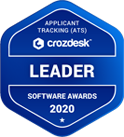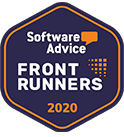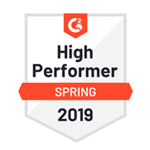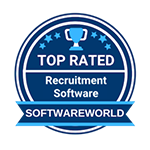Recruitment Team Structure: Build a Dream Team
Building the right recruitment team structure isn’t what it used to be. The old playbook of having a single recruiter handle everything? That stopped working when the talent landscape transformed.
McKinsey’s research revealed something striking in their 2024 Global Talent Report. Companies that modernized their recruiting teams outperformed competitors by 3x in growth rates. Not because they hired more recruiters – but because they built smarter systems.
The talent market evolved in ways few predicted. Remote work reshaping candidate expectations. Benefits packages growing more complex by the year. And perhaps most importantly, candidates now research potential employers with unprecedented depth.
Some of tech’s biggest success stories learned this early. Before restructuring their recruitment team structure, Amazon struggled with hiring bottlenecks that nearly derailed their growth. The solution wasn’t just adding headcount – it was fundamentally rethinking how recruiting teams should operate.
What makes a modern recruiting team effective? The answer challenges conventional wisdom about efficient hiring. Let’s explore the essential elements that separate high-performing recruitment teams from those stuck in outdated models.
What is the Recruitment Team Structure
Let’s get real about what a **recruitment team structure** actually means in today’s world.
Think of it like a sports team. You wouldn’t put five quarterbacks on a football field and expect to win. The same goes for recruiting – you need different players with different skills working together.
A recruitment team structure maps out who does what in your hiring process. It’s the blueprint that makes it clear how your recruiters, coordinators, and specialists work together to find and land great talent.
The Society for Human Resource Management (SHRM) published an interesting study in October 2023. They found that companies with well-defined hiring team structures fill positions 40% faster and see 25% less turnover in their first year. These aren’t just numbers – they’re an indicator that structure matters.
You’ve got two main ways to build this thing:
In-house teams hit different. Being part of your company, they breathe your culture and know exactly what makes someone a good fit. Like Netflix’s famous recruitment squad – they’re known for finding people who don’t just have the skills but also match their “keeper test.” They spend time really getting to know the business and build strong relationships with hiring managers.
Agency partnerships work too, but in their own way. They’re like having a SWAT team you can call in when needed. Great for specific roles or when you need to scale fast. They bring their own tools, networks, and sometimes specialized knowledge you might not have in-house.
Most companies actually mix both. They keep core recruiting functions in-house but partner with agencies for specialized roles or high-volume hiring pushes. It’s not about choosing one or the other – it’s about finding what works for your needs.
What kills most recruiting efforts? Fuzzy lines about who does what. When nobody knows exactly who owns each part of the process, things fall through the cracks. Candidates ghost you. Hiring managers get frustrated. Good people slip away to other companies.
The key is clarity. Everyone needs to know their lane and how it connects to others. Whether you’re running purely in-house or mixing it up with agency help, clear roles and responsibilities make everything smoother.
Structuring your **recruitment team** isn’t just an HR exercise – it’s strategic. Get it right, and hiring becomes your competitive advantage. Get it wrong, and you’ll always be playing catch-up in the talent game.
Looking to build this out for your company? The roles we’ll cover next are your building blocks for success.
Exploring Different Recruitment Team Models

Let’s break down what actually works in modern **recruitment team structures** – no fluff, just real talk.
Three main ways to set this up have emerged in recent years. Each works great for different companies, but it more or less depends on what they’re trying to achieve.
Centralized teams work like a well-oiled machine. One central group handles all hiring, kind of like how Salesforce does it. Their talent acquisition hub manages everything from tech to sales hires. This attention to detail keeps things consistent and lets recruiters share knowledge easily. But here’s the catch – sometimes they struggle to understand the nitty-gritty needs of specific departments.
Stripe took a different path with their decentralized model. Each major department has its own dedicated recruiting mini-team. These recruiters become experts in their areas – engineering recruiters who actually get what a full-stack developer does, or sales recruiters who understand the difference between enterprise and SMB sales roles. The downside? Before you even know it, there’s duplicate work happening across teams.
Then there’s the hybrid approach. HubSpot nailed this one. A recent case study in TechCrunch showed how they mix both models. Core recruiting functions stay centralized, but they embed specialized recruiters within key departments. Smart move – they get the best of both worlds.
Deloitte’s latest talent acquisition report backs this up with numbers that will make sense to you: Companies using hybrid models fill roles 23% faster than those stuck in purely centralized or decentralized setups. The research appeared in their Q3 2023 Global Talent Trends publication.
Your choice depends on what matters most to your company right now:
Going centralized makes sense when consistency and efficiency top your list. It’s a no-brainer to maintain standards and track metrics. It works well for companies in growth mode who need to scale fast.
Pick decentralized if you need deep expertise in specific areas. Tech companies hiring lots of specialized roles often lean this way. Each recruiting team really gets their department’s needs.
Hybrid works best when you want flexibility. You can adapt to it real quick as your company scales and grows in new ways. Plus, you’re not locked into one way of doing things.
The trick isn’t picking the perfect model – it’s picking the right one for where your company is now and where it’s heading.
Key Roles in a Winning Recruitment Team
Here’s a more natural take on the six crucial roles in modern hiring teams:
Every strong **recruitment team structure** needs different players bringing unique skills to the table. Let’s try and figure out what really makes each role tick.
Lead Recruiters
Lead Recruiters own the big picture. Sure, they fill positions, but that’s just the start. IBM’s talent acquisition leads recently shared how they transformed their hiring process by empowering their lead recruiters to challenge requirements and think creatively.
Sourcers
Sourcers are the talent detectives. They know where to look for those hidden gems in a crowded market. Beyond basic LinkedIn searches, they tap into niche communities and foster genuine relationships. Take Shopify’s sourcing team – they find most of their senior engineers through open-source project contributions, not job applications.
Hiring Managers
Want to know who really builds the backbone of the hiring process? Hiring Managers. The good ones don’t just approve or reject candidates. They team up with recruiters, sharing valuable information, and hinting into team dynamics and culture fit. They’re in the trenches basically, and this brings them in the perfect spot to find the right talent.
Recruitment Coordinators
Recruitment Coordinators make the magic happen behind the scenes. They’re masters of logistics, making it their priority to keep candidates engaged and processes flowing. No dropped balls, no awkward scheduling gaps.
Technical Screeners
Technical Screeners bring the expertise lens. They thinslice impressive-sounding resumes to find real skills. They know the difference between someone who memorized coding answers and someone who thinks like a problem solver.
Candidate Experience Specialists
As the newest addition, Candidate Experience Specialists make sure every candidate interaction counts. From the first email to the final decision, they keep the human touch in human resources.
Recent research from the Talent Board shows companies with dedicated experience specialists see 35% higher offer acceptance rates. Their 2023 report highlighted how personal touchpoints make a huge difference.
Here’s what makes this **recruitment team** work:
Clear lanes for each role. No confusion about who handles what. Quick, clean handoffs between stages. Regular sync-ups to catch issues early. Most importantly? Everyone understands how their piece fits into the bigger picture.
Skip any of these roles, and you’ll feel it. Your hiring process might work, but it won’t shine. The best companies tap into this – they build their teams thoughtfully, adding roles as they scale.
Remember though – even perfect structures need the right people in them.
Recruiters and Their Responsibilities
Here’s what recruiters really do in a modern **recruitment team structure**, stripped down to the essentials:

Think of recruiters as relationship builders, not just resume scanners. They connect teams with the right talent available in the market. They’re the ones who make sure your next hire is both skilled and someone people actually want to work with.
Their daily work includes:
– Running strategic hiring meetings with department heads
– Building candidate pipelines that actually work
– Developing interview plans that test both skills and fit
– Negotiating offers that close top talent
– Managing hiring manager expectations
According to Greenhouse’s latest talent report, strong recruiters spend about 60% of their time actively engaging with candidates and hiring managers. The rest goes to strategy and process improvement. This mix seems to work best for most growing companies.
Where do they fit in the **recruitment team**? Right in the center.
They team up with sourcers to locate candidates, collaborate with hiring managers to make decisions, and guide coordinators who handle the logistics. Think of them as the quarterback of your hiring process.
Smart companies give their recruiters ownership over specific areas. Maybe one handles all engineering hires while another focuses on sales roles. They learn the lingo, build deep networks, and spot red flags faster.
Sourcers – The First Line of Talent Acquisition
Here’s what makes sourcers tick in today’s **recruitment team structure**:
Think of sourcers as talent scouts with a detective’s mindset. They don’t wait for the right people to show up – they go find them. While recruiters close deals, sourcers open doors to conversations that wouldn’t happen otherwise.
A recent LinkedIn Talent Solutions study caught my eye. Companies with dedicated sourcing teams see 2x better response rates from passive candidates. Makes sense – good sourcers build relationships before jobs even open up.
How is a great sourcer different from an average one? They dig way deeper than quick LinkedIn searches. They hang out where top talent shares ideas – Github for developers, Behance for designers, and industry Slack channels for specialists. They spot potential in places they are least likely to find.
In the **recruitment team**, sourcers work their magic early. They feed qualified candidates to recruiters, who then focus on assessing them and eventually closing them. This tag-team approach works notably well for hard-to-fill roles where traditional job posts fall short.
Top sourcers also build talent pools in response to anticipated future needs. They map out target companies in their everyday job role, track rising stars, and keep meaningful relationships with people who might be perfect fits for a role that is yet to be announced. Think of it as building a talent pipeline before you need it.
Pro tip from successful tech companies: Give sourcers time to build genuine connections. The best ones aren’t just sending mass messages – they’re starting real conversations about career goals and industry trends.
Recruitment Operations – Driving Efficiency
Let’s talk about the people who keep your **recruitment team structure** running like clockwork.
Think of recruitment operations as the pit crew in a Formula 1 race. While recruiters and sourcers are out front, ops department keeps everything moving smoothly behind the scenes.
I noticed something interesting in Deloitte’s latest talent report. Companies with strong recruiting ops teams fill positions 40% faster. But why? Because they’re laser-focused on removing stumbling blocks before they become problems you need to worry about.
These folks handle the nuts and bolts:
– Building reports that actually tell you something useful
– Making sure you’re following hiring laws (and not getting into hot water)
– Setting up systems that don’t make everyone pull their hair out
– Tracking metrics that matter, not just numbers that look good
Where do they fit in the **recruitment team**? They’re the cornerstone. Need to know why candidates drop out during interviews? Ops has the data. Want to make sure your hiring pipeline management process is fair? They’re watching the numbers.
The best ops people think like process engineers. They’re always asking “How can we make this better?” Maybe it’s automating reference checks or streamlining interview scheduling. Small tweaks add up to big time savings.
Smart companies treat ops as strategic partners, not just admin support. When they’re included in planning, hiring gets faster and smoother for everyone involved.
How to Structure a Recruiting Team

Let’s break down the actual steps to build your **recruitment team structure** from scratch. No fluff, just practical moves that work.
Size Matters, But Strategy Matters More
Start by mapping out what you’re really trying to achieve. A study by Lever found that fast-growing SaaS companies who aligned their recruiting structure with business goals hired 45% faster than those who didn’t. Published in their 2023 Talent Acquisition Benchmark Report, this data shows why thoughtful planning beats rushing to hire recruiters.
Step 1: Build Your Foundation
Start with these core positions:
– One lead recruiter who gets your industry
– A coordinator to keep things organized
– A sourcer (can be part-time) for proactive talent hunting
For companies under 100 people, this trinity can handle most hiring needs. The guiding principle is picking people who can wear multiple hats while you grow.
Step 2: Divide and Conquer
Once you hit growth mode:
– Split recruiters by department (tech, sales, ops)
– Add specialists for hard-to-fill roles
– Bring in a recruiting ops person to track metrics
Step 3: Create Clear Swim Lanes
Your **recruitment team** needs to know who owns what. Draft simple process maps showing:
– Who handles initial outreach
– When recruiters take over from sourcers
– How hiring managers fit into the process
– Where coordinators step in
Real-world example: Notion started with this exact setup. They mapped out responsibilities clearly from day one. Result? They scaled from 40 to 400 people in two years without major hiring hiccups.
Step 4: Add Support Functions
As you grow past 200 people, consider adding:
– Talent analytics specialist
– Employer branding expert
– Technical recruiters for engineering roles
– Interview training coordinator
Step 5: Build in Flexibility
Your structure should breathe with your business. During high-growth periods, you might need more sourcers. During steady states, focus on building talent pools for future needs.
Warning Signs Your Structure Needs Work:
– Recruiters juggling too many roles
– Candidates mentioning communication gaps
– Hiring managers feeling lost in the process
– Time-to-hire creeping up
Quick Fixes That Work:
– Regular sync meetings between all recruiting team members
– Clear handoff points between stages
– Shared metrics everyone understands
– Regular feedback loops with hiring managers
Remember: This isn’t about building the perfect structure overnight. It’s about creating something that can scale however you want it to. Start with the basics, measure what works, and adjust as you learn.
The best structures evolve naturally. They’re not forced. They grow from real needs and real feedback from your team.
Small Businesses – Lean but Effective Teams
Let’s talk about making a lean **recruitment team structure** work when resources are tight.
Small businesses can punch above their weight in hiring. Take Sarah’s tech startup – with just two people handling recruitment, they grew from 15 to 50 employees last year. Their secret? Smart tools and clear priorities.
For small teams, here’s what actually works:
– One seasoned recruiter who owns the whole process
– A part-time coordinator (maybe shared with HR)
– Hiring managers who actively help with sourcing
The Harvard Business Review recently highlighted how small companies can compete for talent. Their key finding? Small teams that focus on building relationships over fancy processes often win against bigger competitors.
Your **recruitment team** might be small, but it can still be mighty. Use technology to turn your efforts into real impact. Modern tools like RecruitBPM help small teams handle bigger hiring loads. Some growing companies even share recruiters across departments.
Pro tip from successful small businesses: Build a network before you need it. Get involved in industry communities, stay in touch with alumni, and keep those relationships alive. When you need to hire fast, these connections become your secret weapon.
Remember – being small has advantages. You can move faster, be more personal with candidates, and adapt quickly when something isn’t working.
Scaling Up Mid-sized Teams
Let’s explore how growing companies can level up their **recruitment team structure** without losing what makes them special.
Growing pains in recruiting hit different. Just ask Calendly. When they hit 100 employees, their old hiring approach started cracking. Their solution? They built pods – mini recruiting teams focused on specific departments.
Here’s what works at this stage:
– A lead recruiter heading each major department
– Two sourcers splitting technical and non-technical roles
– A dedicated coordinator team keeping everything flowing
– One ops person tracking what works (and what doesn’t)
Smart companies at this size do something interesting with their **recruitment team**. They create specialists but keep them talking to each other. Like how DataDog has their tech recruiters sit in on sales team meetings sometimes. Keeps everyone sharp and connected.
McKinsey dropped some interesting data recently. Mid-sized companies that build flexible recruiting teams – ones that can shift focus as hiring needs change – grow 30% faster than those with rigid structures.
Think of scaling like building with Lego blocks. Start with your foundation pieces, then add specialized blocks as you grow. But keep things connected. When teams get siloed, that’s when hiring slows down.
The secret sauce? Regular team huddles where everyone shares what they’re learning. Keeps the machine humming and helps spot problems before they blow up.
Enterprise Level Recruitment Team
Here’s a more natural take on big-league recruiting:
Big companies face unique challenges in their **recruitment team structure**. When you’re hiring hundreds or thousands of people yearly, you can’t wing it anymore.
Look at what works in the real world. Adobe completely flipped their recruiting model in 2023. Instead of one massive team, they created smaller, focused groups. Each has its own personality and style, but they all know exactly who they’re hiring for.
The nuts and bolts look different at this level:
– Every major department gets its own full recruiting squad
– Analytics teams spot hiring trends before they become problems
– Brand specialists keep the company looking good to top talent
– Tech teams make sure all the hiring tools play nice together
And guess what? These bigger teams actually move faster. Gartner found something surprising in their latest talent research – large companies with well-organized **recruitment teams** fill spots just as quickly as smaller ones. They published this in their Q4 2023 report on enterprise hiring.
But size brings its own headaches. The best companies keep things personal even when they’re huge. They let their recruiters build real relationships with their departments. No cookie-cutter approaches allowed.
Big doesn’t have to mean slow or robotic. The trick is finding that sweet spot between structure and flexibility. When you get it right, hiring becomes a strength, not a headache.
Tools and Technologies for Recruitment Teams
Let’s talk about the tools that actually make a **recruitment team structure** work in real life, without getting lost in tech buzzwords.
The Right Tools Make Teams Stronger
Good tools amplify what your recruiting team can do. Bad ones just create busywork. A Bersin study showed something interesting – teams with the right tech stack hire 30% faster than those struggling with clunky systems.
Your Basic Tool Kit:
– An Applicant Tracking System (ATS) that doesn’t fight you
Modern ones like RecruitBPM, Greenhouse, or Lever do more than store resumes. They empower teams to work together and possibly track hiring patterns. One mid-sized tech company saw their time-to-hire drop by two weeks just by switching to a more user-friendly ATS.
– Sourcing Tools That Actually Help
The best sourcers combine LinkedIn Recruiter with tools like SeekOut or Gem. They’re not just sending mass messages – they’re finding people who might actually want to talk. Plus, these tools track who’s been contacted so teams don’t step on each other’s toes.
– CRM That Makes Sense
Your **recruitment team** needs to keep track of relationships. Good CRMs help you nurture talent pools and keep candidates warm. One gaming company built a whole pipeline of future hires just by staying in touch with people who weren’t quite ready to move.
– Analytics That Tell You Something Useful
Forget vanity metrics. Focus on data that helps you make decisions:
– Where do your best hires come from
– Which interviewers are too harsh or too easy
– How long each hiring step really takes
– Which managers need help with hiring
– Collaboration Tools Matter Too
When your team can’t tap each other on the shoulder, you need:
– A main chat channel for quick questions
– Video tools that don’t glitch during interviews
– Shared calendars that actually sync
– Easy ways to share feedback
Warning Signs Your Tools Need Work:
– Recruiters spending more time-fighting software than talking to candidates
– Data living in too many different places
– Simple tasks taking too many clicks
– Teams creating workarounds to get things done
Real Talk About AI Tools
Sure, AI can help screen resumes or write job descriptions. But the best teams use it carefully – as a helper, not a replacement for human judgment. The technology’s not there yet for making final decisions.
Integration Is Key
Your tools should talk to each other. When they don’t, people waste time copying data around. One company found their recruiters were spending 10 hours a week just moving information between systems. That’s time better spent with candidates.
Remember: Tools should make work easier, not create new problems. Start with what you really need, then add tools as you grow. And always get feedback from the people who’ll actually use them – they know what works in the trenches.
The best setups feel natural. Like everything’s where it should be. That’s when your team can focus on what matters – finding great people who’ll help your company grow.
Applicant Tracking Systems
Let’s talk about how an ATS fits into your **recruitment team structure** without getting caught up in technical jargon.
Picture your ATS as the control center of your hiring process. It’s where everything comes together. Top companies pick systems that make life easier, not harder. One tech startup switched from spreadsheets to an ATS and cut their hiring time in half.
The good ones help teams work smarter:
– Keep candidate info in one place, not scattered across email chains
– Show exactly where each person is in the hiring process
– Let everyone leave feedback that others can actually find
– Track which sourcing methods bring in the best people
Your **recruitment team** should spend time talking to candidates, not wrestling with software. Modern ATS systems like RecruitBPM get this right. They automate the boring stuff – sending follow-up emails, scheduling interviews, and collecting feedback.
A quick tip from successful companies: Take time to set up your ATS properly from the start. One mid-sized software company found that spending a week getting their workflows right saved them months of headaches later.
But watch out – even the best ATS can’t fix broken processes. First, figure out how your team should work together. Then pick a system that supports that workflow. Not the other way around.
Remember: Your ATS should feel like a helpful assistant, not another job to manage.
Collaboration Tools for Remote Teams
Let’s talk about keeping your **recruitment team structure** strong when everyone’s working from different places.
Remote hiring teams face unique challenges. One product company found this out the hard way when their interviews kept getting mixed up across time zones. But they fixed it with the right mix of tools.
What actually works for scattered teams:
– A main chat channel where recruiters can quickly ask “Has anyone dealt with this before?”
– Video platforms that don’t freeze during crucial candidate conversations
– Shared docs where hiring plans stay current and clear
– Quick ways to share interview feedback before it gets cold
The best **recruitment teams** pick tools that feel natural to use. Like how Miro’s digital whiteboards let remote teams brainstorm hiring strategies together. Or how Notion keeps everyone’s hiring docs organized and easy to find. Or how RecruitBPM runs sequences for you.
A smart trick from successful remote teams: Set up “virtual water cooler” chats. Quick 15-minute stand-ups where recruiters share what’s working and what isn’t. Keeps everyone connected without endless meetings.
But here’s the thing – tools only work when people actually use them. Keep it simple. Pick a few key tools that solve real problems. Skip the fancy features nobody needs.
The goal? Make distance disappear so your team can focus on finding great people.
Metrics and KPIs to Evaluate Team Performance
Let’s break down how to actually measure if your **recruitment team structure** is working, using numbers that matter.
Smart teams track what counts. Not just basic stats, but metrics that show the whole picture. The Society for Human Resource Management found something interesting – teams tracking the right metrics hire better people and keep them longer.
The Numbers That Really Matter:
Time Metrics:
– Time from first look to offer accepted
– How long candidates sit at each stage
– Response times from hiring managers
– Time between critical touchpoints
Money Talk:
– What each hire really costs (including team time)
– Return on recruiting tools and tech
– Cost differences between hiring sources
– Budget spent vs. quality gained
Quality Checks:
– New hire performance at 6 months
– How long people stay
– Manager satisfaction scores
– Candidate experience ratings
Your **recruitment team** should watch these daily signals:
– Qualified candidates per role
– Interview pass-through rates
– Offer acceptance trends
– Source effectiveness
Pro tip from top-performing companies: Don’t just collect numbers – use them to make things better. One tech firm noticed their engineering candidates dropped out most often after technical interviews. They tweaked that stage and saw immediate improvements.
Red Flags to Watch:
– Rising time-to-hire in specific departments
– Increasing candidate dropoffs
– Declining offer acceptance rates
– Growing cost per quality hire
Success Signs:
– Consistent pipeline flow
– Quick feedback loops
– High hiring manager happiness
– Strong candidate experience scores
Remember: Track what helps you hire better, not just what’s easy to measure. Focus on metrics that guide decisions, not just fill reports.
The best teams use data to spot problems early and fix them fast. They don’t wait for end-of-month reports to know something’s off.
Keep it practical. Keep it focused. And always tie metrics back to what matters – building great teams.
Innovative Approaches to Recruitment Team Structure
Here’s a fresher take on what’s new in **recruitment team structure**:
You know what nobody’s talking about enough? The stuff that’s actually changing how we build hiring teams. Not the flashy tech or buzzwords – the real shifts are happening right now.
Take diversity hiring. Some companies still treat it like a checkbox. But look at what Twilio did. They created a whole new role – the Inclusion Sourcing Specialist. Not just another recruiter with “diversity” tacked onto their title. Someone who really gets different communities and knows how to build trust.
The AI conversation needs a reality check too. It’s not about robots taking over hiring. It’s about making recruiters’ lives easier. One growing tech company lets AI handle the boring stuff – scheduling, initial resume screens, follow-up emails. Their recruiters? They spend that extra time actually talking to candidates.
Your **recruitment team** might need some new faces:
– Data people who spot hiring trends early
– Culture specialists who help teams grow right
– Wellness coaches (because recruiter burnout is real)
– Tech experts who make tools work better
Here’s something cool – companies are mixing things up with “pod” structures. Instead of strict department lines, they build small, flexible teams. These pods handle everything for their area, from sourcing to closing. When hiring needs change, the pods adapt.
The hidden game-changer? Mental health support. The best companies now treat recruiter wellbeing as seriously as hitting hiring targets. They’re adding breathing room between searches, creating backup systems for busy times, and actually measuring workload balance.
Looking ahead, watch for:
– Teams that flex between specialist and generalist roles
– More focus on candidate experience design
– Better ways to measure quality of hire
– New roles we haven’t even thought of yet
The point isn’t to chase every new trend. It’s about finding what makes your team stronger without losing the human touch that makes great hiring possible.
Diversity and Inclusion: Structuring for Success
Let’s talk about building a **recruitment team structure** that actually delivers on diversity, not just talks about it.
Sounds obvious, but diversity efforts fail when they’re just an add-on to existing hiring. Doordash turned this around by embedding diversity experts within each hiring team. Not as observers, but as active players with real authority to influence decisions.
What works in practice:
– Training sourcers to tap into different networks and communities
– Teaching interviewers to spot their own hidden biases
– Building partnerships with groups that reach diverse talent pools
– Having diverse voices in every step of the hiring process
Your **recruitment team** needs clear ownership here. One person leading diversity initiatives, sure, but everyone playing their part. Like how Dropbox gives each recruiter specific diversity goals tied to their performance reviews.
A practical tip that’s working now: Create candidate experience maps from different perspectives. Walk through your hiring process as candidates from various backgrounds would experience it. Where would they feel out of place? What might make them hesitate?
The best companies know something important: Diverse teams build better products. But only if you create an environment where everyone can actually do their best work. That starts with how you structure your hiring team.
Just remember – this isn’t about hitting numbers. It’s about building teams that bring different viewpoints and experiences to solve problems in new ways.
AI in Recruitment Operations
Let’s get real about what AI actually does for your **recruitment team structure** today – no sci-fi stuff, just practical uses.
Think of AI like a smart assistant for your recruiting team. Not replacing anyone, just handling the time-consuming bits. One growing startup used it to screen resumes and saw their recruiters suddenly had twice as much time for actually talking to candidates.
What’s working right now:
– Spotting promising candidates in large applicant pools
– Writing first drafts of job descriptions that sound human
– Catching biased language before it goes public
– Helping schedule interviews across time zones without the back-and-forth
Your **recruitment team** can use AI to work smarter, not harder. Like how HubSpot uses it to predict which candidates are most likely to accept offers. Their recruiters focus extra attention on these prospects, leading to better close rates.
A word of caution though. AI tools need human oversight. One tech company learned this when their AI started favoring certain schools too heavily. Their fix? They had experienced recruiters review the AI’s criteria and adjust for fairness.
Smart tip: Start small. Pick one process that’s eating up your team’s time. Test an AI tool there. See what works. Then expand if it helps.
The goal isn’t to automate everything. It’s to free up your team to do what machines can’t – build relationships and make thoughtful hiring decisions.
Common Challenges and Solutions
Let’s tackle the real headaches that pop up in a **recruitment team structure** and how to fix them.
Communication Breakdowns
Ever had candidates get different info from different team members? That’s usually the first sign things are slipping. One tech company fixed this by creating a single source of truth – a shared dashboard where everyone could see real-time updates about each candidate.
The fix:
– Daily quick stands instead of long weekly meetings
– Clear handoff points between sourcers and recruiters
– Regular sync-ups with hiring managers
– A main chat channel for quick questions
Team Burnout
Your **recruitment team** can’t perform if they’re overwhelmed. Signs to watch for:
– Recruiters handling too many roles
– Quality of candidate experience dropping
– Simple tasks taking longer than usual
– More mistakes in scheduling and follow-ups
A gaming studio solved this by mapping out everyone’s workload. They set realistic limits – no more than 15 active roles per recruiter. When someone got close to that number, they’d redistribute or bring in help.
Hiring Manager Friction
Sometimes hiring managers and recruiters feel like they’re speaking different languages. One company fixed this with “role kickoff meetings” – getting everyone aligned on must-haves versus nice-to-haves before starting the search.
Data Problems
Bad data leads to bad decisions. Common issues:
– Metrics that don’t tell the whole story
– Information scattered across different tools
– Inconsistent tracking methods
– Missing feedback data
Quick fixes that work:
– Pick 5-6 core metrics everyone tracks
– Use templates for feedback collection
– Set up automated reporting
– Regular data cleanup sessions
High Turnover
When recruiters keep leaving, something’s wrong. Usually, it’s about:
– Unclear career paths
– Unmanageable workloads
– Lack of recognition
– Poor tools and support
Smart companies create growth plans for their recruiters. They offer chances to learn new skills, lead projects, and move up. Makes people want to stick around.
Remember: Most problems show up as small issues before they become big ones. The trick is spotting them early and fixing them fast. Keep checking in with your team – they usually know what’s wrong before it shows up in the numbers.
The best solutions often come from the people doing the work. Ask your team what would help them do their jobs better. Then actually listen and act on what they tell you.
Wrapping Up
Let’s talk about what really matters when you’re building your **recruitment team structure**.
You know what’s interesting? The best hiring teams don’t copy Amazon or Google’s playbook. They figure out what works for them. It’s like cooking – you might start with someone else’s recipe, but you adjust the ingredients to match your own taste.
The basics matter more than fancy strategies. Get these right first:
– People who actually talk to each other
– Simple processes everyone understands
– Tools that don’t drive everyone crazy
I’ve seen companies try to run before they can walk. One tech startup bought every recruiting tool out there before they even had a solid hiring process. Guess what happened? Chaos. But when they stepped back and focused on the fundamentals, things clicked.
Your **recruitment team** should feel like a well-oiled machine, not a Rube Goldberg contraption. Keep it simple at first. Add complexity only when you need it.
Think about your next step. Maybe it’s clearing up who handles what in your hiring process. Or finding better ways for your team to share information. Pick one thing and make it better
Remember – good hiring builds great companies. It’s worth getting right.
Want to make changes? Start today. Your future team will thank you.
FAQs
Let’s answer the real questions people ask about **recruitment team structure** in plain language.
“How many recruiters do we actually need?”
Start with one solid recruiter for every 30-50 hires you plan to make this year. But here’s the thing – a rockstar recruiter who knows your industry can handle more than these numbers suggest. One software company I worked with had a single recruiter successfully manage 70 hires because she really got the tech space.
“Specialist or generalist recruiters?”
Around the 100-employee mark, you’ll want specialists. Having someone who speaks engineer to engineers or sales to salespeople just works better. But keep your **recruitment team** connected – good ideas should spread.
“When’s the right time for a sourcer?”
Watch your recruiters. When they’re spending more time hunting for candidates than actually talking to them, it’s time. Usually hits when you’re hiring lots of hard-to-fill roles like senior engineers or specialized sales leaders.
“Should we use agencies or build in-house?”
Most companies do both. Build your core team in-house for regular hiring. Bring in agencies when you need to hire fast or for unique roles. It’s like having a backup plan – there when you need it.
“How do we know if this is working?”
Look for:
– Quick fills with good hires
– Happy hiring managers
– Candidates who say good things
– Recruiters who aren’t burning out
“Can remote recruiting teams really work?”
Absolutely. Just ask GitLab or Zapier. Their whole recruiting teams work remote. The secret? Good tools and regular face time on video. Some even say it helps them hire better because they understand remote work firsthand.
Bottom line: Do what works for your company right now. Perfect is the enemy of good when it comes to building your recruiting team.

















